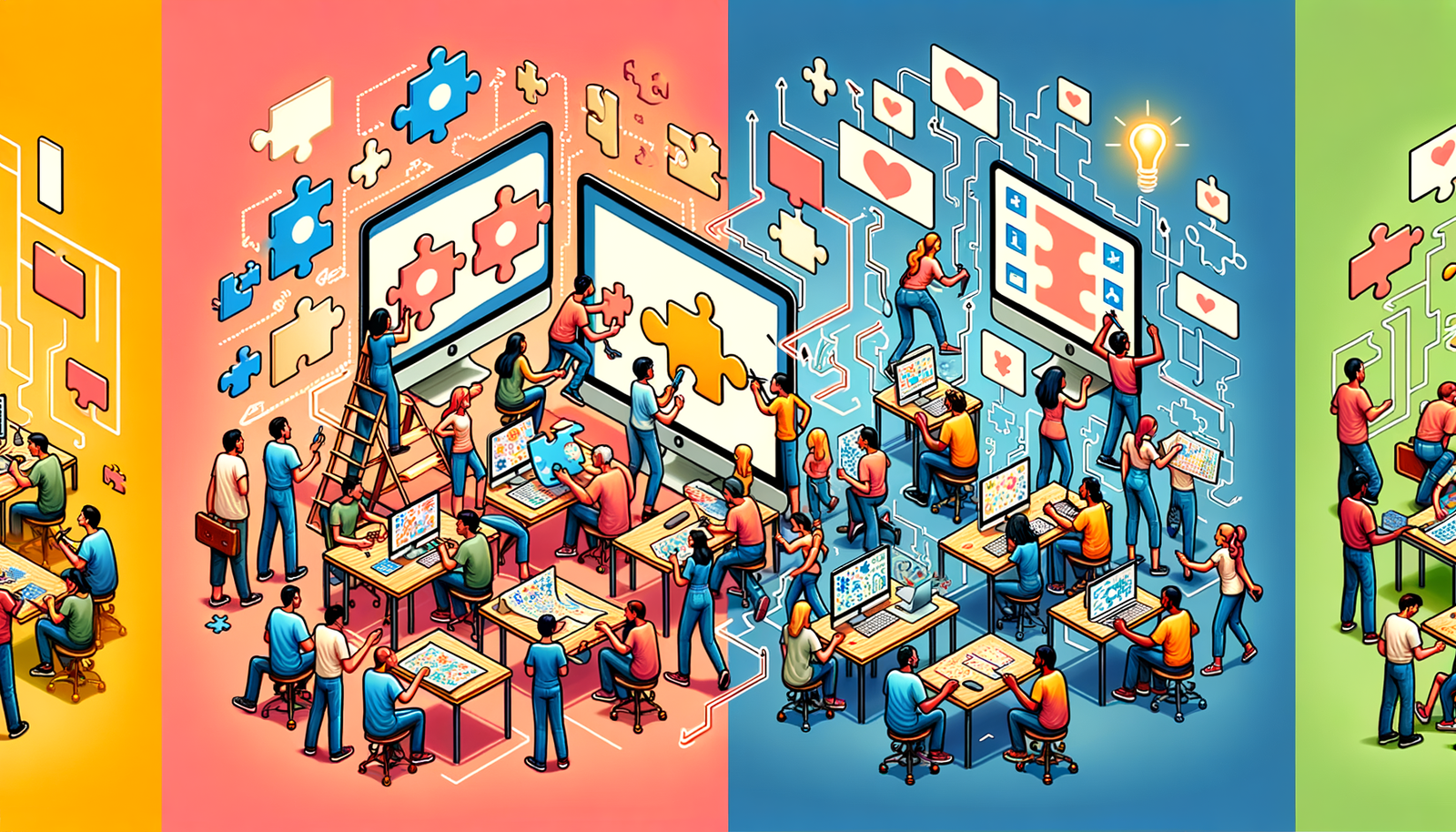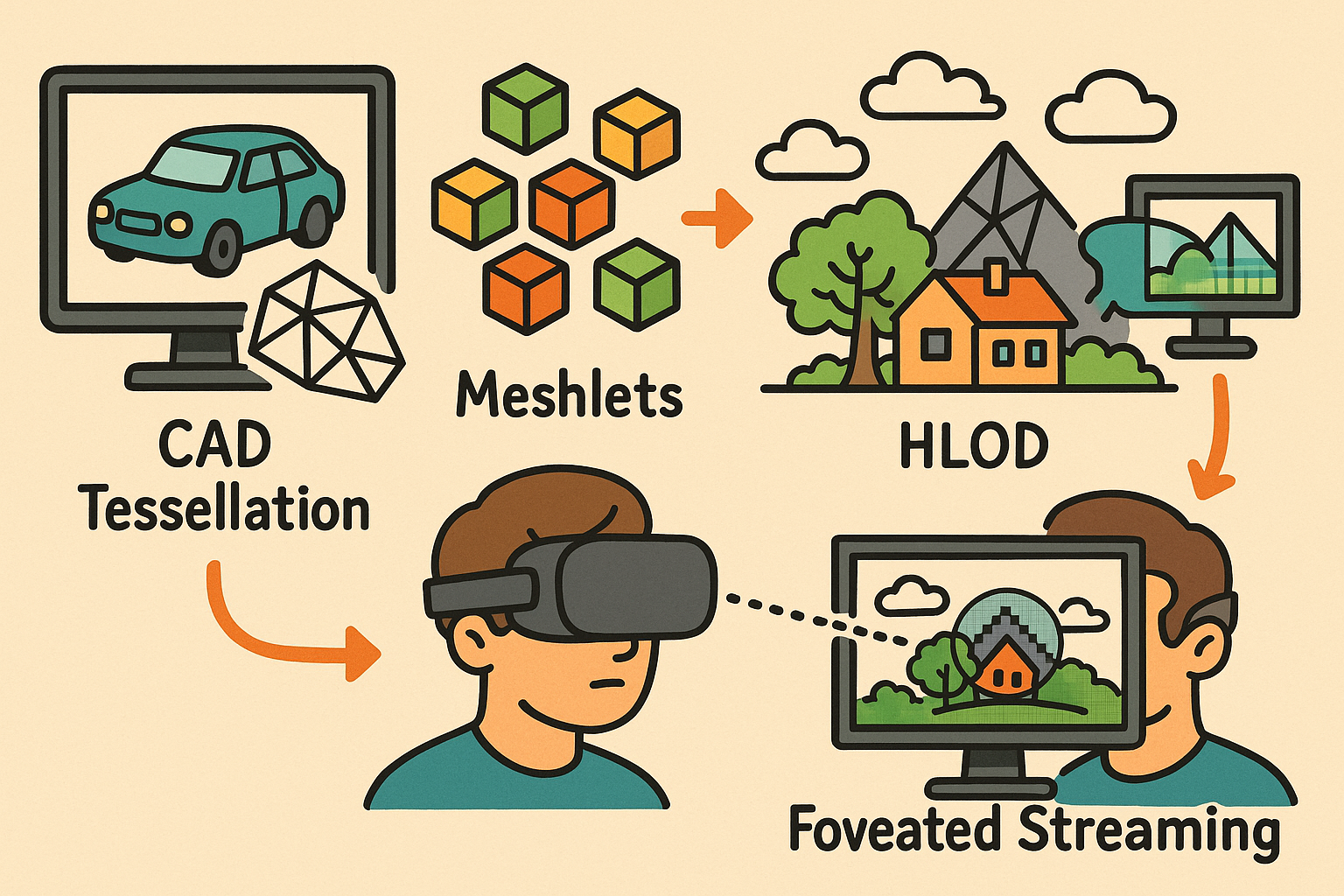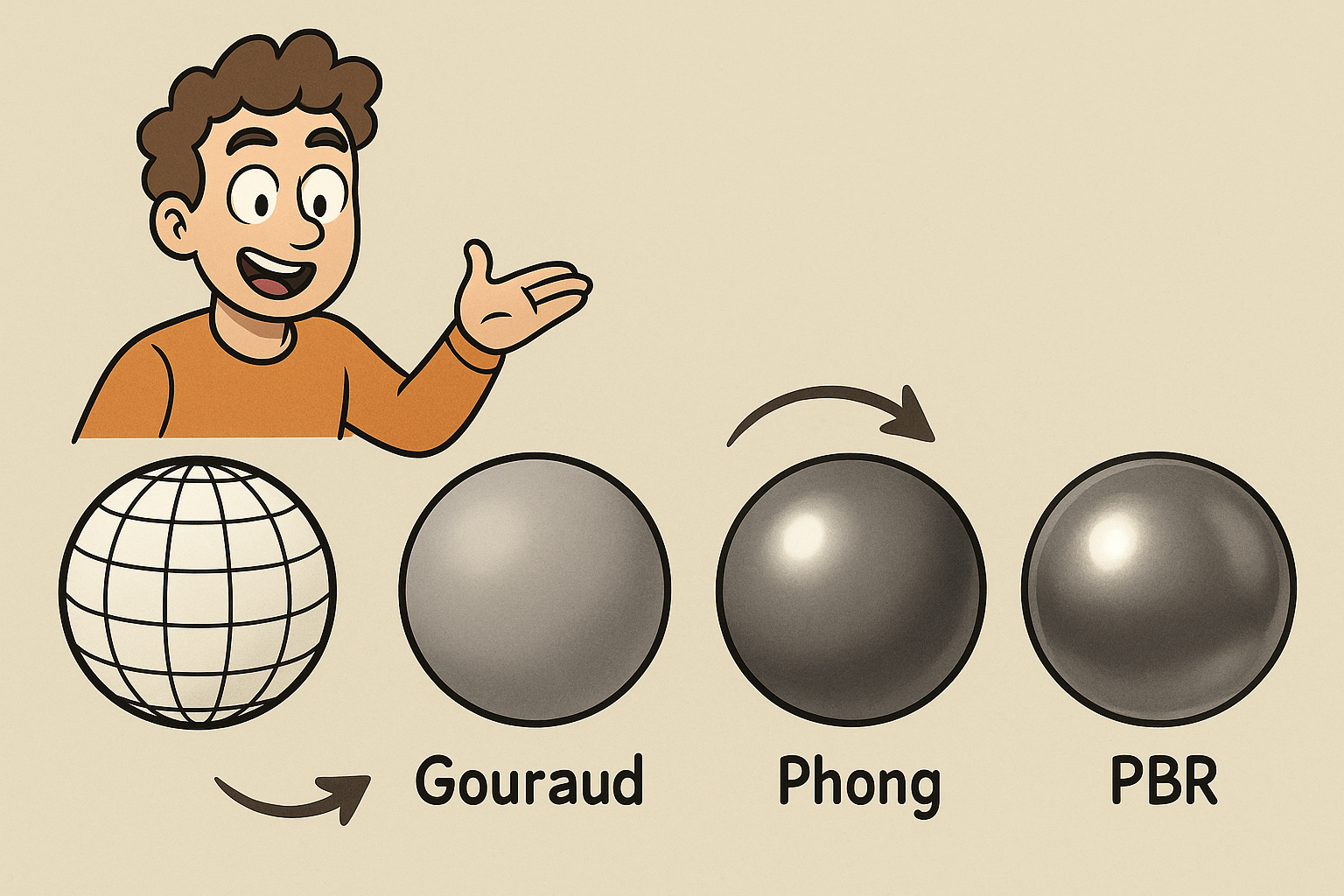Your Cart is Empty
Customer Testimonials
-
"Great customer service. The folks at Novedge were super helpful in navigating a somewhat complicated order including software upgrades and serial numbers in various stages of inactivity. They were friendly and helpful throughout the process.."
Ruben Ruckmark
"Quick & very helpful. We have been using Novedge for years and are very happy with their quick service when we need to make a purchase and excellent support resolving any issues."
Will Woodson
"Scott is the best. He reminds me about subscriptions dates, guides me in the correct direction for updates. He always responds promptly to me. He is literally the reason I continue to work with Novedge and will do so in the future."
Edward Mchugh
"Calvin Lok is “the man”. After my purchase of Sketchup 2021, he called me and provided step-by-step instructions to ease me through difficulties I was having with the setup of my new software."
Mike Borzage
Design Software History: The Evolution of User-Generated Content in Design Software: From Early Customization to Collaborative Innovation
January 02, 2025 8 min read


Introduction
User-generated content (UGC) has become a cornerstone of modern design software, radically transforming the landscape of digital creation. In the realm of design software, UGC encompasses any content produced by end-users, including but not limited to 3D models, textures, animations, scripts, and plugins. This content is developed by users who are not the original creators of the software but who wish to enhance or customize their design tools to better suit their individual needs or to share with the community. The early stages of user participation in design software were relatively constrained; users had minimal ability to modify software beyond basic interface adjustments or utilizing predefined templates. The software was often proprietary, and the sharing of user-created content was limited by technical and legal barriers. However, as technology advanced and the demand for more flexible and collaborative tools grew, users began to take a more active role in expanding the capabilities of their software. The significance of user-generated content lies in its ability to democratize design processes. By enabling users to contribute their own content, design software becomes more accessible and adaptable, fostering a collaborative environment where innovation thrives. This shift has empowered individual creators and small teams, allowing them to compete with larger organizations by leveraging community resources and collective knowledge. The evolution of UGC in design software reflects a broader trend towards decentralization and user empowerment in the digital age.
The Beginnings of User Modifications
The initial forays into user modifications within design software trace back to the early days of Computer-Aided Design (CAD) systems in the 1960s and 1970s. Early CAD software, such as Ivan Sutherland's Sketchpad developed in 1963, laid the groundwork for graphical interaction with computers but offered limited scope for user customization. As CAD software evolved through the 1980s, products like AutoCAD, introduced by Autodesk in 1982, began to incorporate features that allowed users to extend the software's capabilities. AutoCAD's introduction of the AutoLISP programming language enabled users to write custom scripts and functions, marking one of the first significant steps towards user-generated content in design software. This feature empowered users to automate repetitive tasks, create custom commands, and tailor the software to their specific workflows. Early adopter communities began to form around these capabilities, with users sharing scripts and modifications through bulletin board systems (BBS) and later via the internet as connectivity expanded. The sharing of customizations not only enhanced productivity but also fostered a collaborative culture among designers and engineers. Companies like Intergraph and Bentley Systems also contributed to this trend by providing APIs and development environments within their software offerings, encouraging users to develop custom solutions. The early stages of user customization were characterized by a pioneering spirit, with a relatively small but passionate group of users pushing the boundaries of what design software could do. Their contributions laid the foundation for a more open and participatory approach to software development in the design industry.
The Rise of Open Source and Community Contributions
The rise of open-source software dramatically amplified the role of user-generated content in design software. Open-source design tools emerged as accessible alternatives to proprietary software, offering users the freedom to modify and distribute software code. This openness fundamentally changed how users interacted with design tools, transforming them from passive consumers into active contributors. The open-source movement, which gained significant momentum in the 1990s and early 2000s, allowed for a collaborative development model where users could directly influence the direction of software projects. By having access to the source code, users were empowered to fix bugs, add new features, and optimize performance to meet their specific needs. This participatory model led to the development of robust communities centered around shared goals and mutual support. The impact on user-generated content was profound; not only could users create and share content such as models and assets, but they could also contribute to the very fabric of the software itself. This synergy between users and developers blurred the lines between content creation and software development, fostering an ecosystem where innovation was driven by collective effort. Open-source design software became platforms for experimentation and customization, with users contributing to extensive libraries of plugins, scripts, and extensions. These contributions significantly expanded the capabilities of the software, often outpacing the development resources of proprietary counterparts. The rise of open-source and community contributions marked a pivotal shift towards a more inclusive and dynamic design software landscape, emphasizing collaboration, transparency, and shared ownership.
Library Integration
As the demand for user-generated content grew, design software companies began to recognize the value of integrating user content libraries directly into their products. Library integration became a strategic focal point, enabling users to access, share, and manage content seamlessly within the software environment. Companies like Autodesk introduced platforms such as the Autodesk Exchange App Store, which provided a centralized repository where users could download and contribute plugins, extensions, and other content for software like AutoCAD and Revit. This integration facilitated a dynamic ecosystem where users could enhance their tools with minimal effort, fostering greater productivity and customization. Similarly, Dassault Systèmes' SolidWorks included user content libraries that allowed designers to share components, macros, and design templates. By incorporating these libraries, software developers created more versatile and adaptable tools that catered to a wider range of user needs. The integration of user-generated libraries offered several benefits:
- Enhanced Customization: Users could tailor the software to their specific industry or project requirements.
- Community Collaboration: Sharing content fostered a sense of community and collective advancement.
- Reduced Development Time: Access to reusable components streamlined the design process.
The incorporation of user content libraries demonstrated a shift towards user-centric design in software development. By leveraging the creativity and expertise of their user base, companies were able to offer more comprehensive solutions without solely relying on internal development resources. This strategy also encouraged user engagement and loyalty, as contributors felt directly connected to the evolution of the software. The integration of libraries for user content became a standard feature in many design tools, reflecting the industry's acknowledgment of the importance of user-generated content in driving innovation and meeting diverse user needs.
Online Platforms and Marketplaces
The advent of online platforms and marketplaces significantly expanded the reach and impact of user-generated content in design software. Platforms such as Thingiverse and GrabCAD emerged as global hubs where designers, engineers, and hobbyists could share and exchange a vast array of digital designs and models. These online communities transcended geographical boundaries, enabling collaboration and innovation on an unprecedented scale. Thingiverse, launched by MakerBot Industries in 2008, became one of the largest repositories for 3D printable models, providing users with free access to a diverse collection of designs ranging from simple household items to complex mechanical components. Similarly, GrabCAD, founded in 2010, offered a platform for sharing CAD models and fostering collaboration among engineers and designers. The role of these platforms in facilitating collaboration and innovation is multifaceted:
- Knowledge Sharing: Users could learn from others' designs, improving their skills and understanding of design principles.
- Community Engagement: Interactive features such as comments, ratings, and forums promoted active participation and feedback.
- Accelerated Innovation: By building upon existing designs, users could rapidly develop new ideas and solutions.
Online platforms democratized access to high-quality design content, enabling individuals and small businesses to leverage resources that were previously inaccessible. They also provided opportunities for recognition and career advancement, as talented creators could showcase their work to a global audience. The collaborative environment fostered by these platforms led to the development of innovative products and solutions, as users combined their expertise and creativity. The success of these online marketplaces highlighted the transformative power of user-generated content in the design industry, underscoring the importance of connectivity and community in driving progress.
Advancements in Customization and Personalization
User-generated content has catalyzed significant advancements in customization and personalization within design software, allowing users to create more tailored and sophisticated design solutions. By contributing their own content, users can adapt software tools to meet specific project requirements, industry standards, or personal preferences. This capability has led to a more versatile and user-centric approach to design, where the limitations of out-of-the-box software are overcome through community contributions. Emerging tools and technologies have further empowered users to create complex content. Parametric modeling and procedural generation techniques enable designers to define designs through relationships and algorithms, allowing for rapid iteration and customization. Visual programming languages, such as Grasshopper for Rhino and Dynamo for Revit, provide intuitive interfaces for creating complex geometries and systems without extensive coding knowledge. Additionally, advancements in additive manufacturing and 3D printing have expanded the possibilities for realizing complex designs, with software tools integrating seamlessly with these technologies. The integration of scripting and API access in design software empowers users to automate tasks, create custom interfaces, and develop plugins that extend functionality. The proliferation of machine learning and artificial intelligence technologies is also beginning to impact user-generated content, with tools that assist in generating designs based on user inputs or learned patterns. These advancements have made it possible for users to tackle complex design challenges more efficiently and creatively than ever before. User-generated content thus serves as both a catalyst for innovation and a means of democratizing access to advanced design capabilities, leveling the playing field for individuals and organizations of all sizes.
Challenges and Opportunities
While user-generated content offers tremendous opportunities, it also presents challenges that must be navigated to fully realize its potential. Intellectual property (IP) concerns are paramount, as the sharing and modification of user-created content can lead to disputes over ownership and rights. Designers contributing content to shared libraries or online platforms may face ambiguity regarding how their work can be used, modified, or distributed by others. Establishing clear licensing agreements, such as Creative Commons licenses, helps to define permissible uses and protect creators' rights. Quality control is another significant issue, as the open nature of user-generated content can result in varying levels of quality and reliability. Ensuring that shared content meets industry standards and is free from errors is crucial, especially in professional and engineering contexts where mistakes can have serious consequences. Platform developers and community moderators often implement validation processes, rating systems, and user reviews to maintain high-quality repositories.
The role of artificial intelligence (AI) and machine learning is increasingly prominent in enhancing UGC capabilities. AI can assist in automating quality checks, detecting errors or inconsistencies in user-generated models, and suggesting improvements. Machine learning algorithms can analyze large datasets of user content to identify patterns and optimize design processes. For example, AI-driven generative design tools can create design options based on user-defined parameters and learn from user feedback to improve over time. These technologies present opportunities to elevate the effectiveness of user-generated content, making it more robust and adaptable. However, they also introduce new considerations around data privacy and ethical use of AI. Balancing the benefits of AI with the need for transparency and user trust is essential. Overall, addressing the challenges associated with intellectual property and quality control, while harnessing the opportunities provided by AI and machine learning, is critical for the continued growth and success of user-generated content in design software.
Conclusion
In conclusion, user-generated content has had a transformative effect on the design software industry, reshaping how designers interact with tools and collaborate with peers. UGC has democratized access to advanced design capabilities, enabling users at all levels to contribute to and benefit from a collective pool of knowledge and resources. This shift has empowered individuals and smaller organizations to innovate and compete in ways that were previously unattainable. The balance between professional design and crowd-sourced content has evolved into a synergistic relationship, where professional standards and user creativity coexist. Professional designers and firms leverage user-generated content to enhance their workflows, while also contributing back to the community. This reciprocal dynamic fosters continuous improvement and innovation within the industry. Looking ahead, the evolution of UGC in the design ecosystem is poised to accelerate, driven by advancements in technology and shifting cultural attitudes towards collaboration and sharing. The integration of artificial intelligence and machine learning will further enhance the capabilities of user-generated content, enabling more intelligent and adaptive design tools. Blockchain technology may also play a role in addressing intellectual property concerns by providing secure and transparent records of ownership and transactions. Virtual and augmented reality technologies could expand the ways in which users create and interact with content, opening new avenues for collaborative design. As the boundaries between users and developers continue to blur, the design software industry is likely to become even more community-driven and user-focused. Embracing these trends will be essential for staying at the forefront of innovation and harnessing the full potential of user-generated content in shaping the future of design.
Also in Design News

Perceptual LOD Pipeline for Real-Time and VR: CAD Tessellation, Meshlets, HLOD, and Foveated Streaming
November 21, 2025 13 min read
Read More
Design Software History: From Wireframe to PBR: How Gouraud, Phong, and the Microfacet Turn Changed CAD Shading
November 21, 2025 15 min read
Read MoreSubscribe
Sign up to get the latest on sales, new releases and more …



